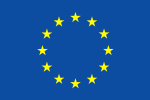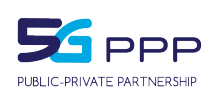Contact: norway-facility@5g-vinni.eu
- E2E network slicing (eMMB, URLLC, mMTC) with the option of customized network slice.
- E2E Service Orchestration by Nokia
- NFVI (Open Compute Projectg) and MANO (Openstack) by Nokia
- 5G RAN (Four 5G gNBs) by Ericsson (2) and Huawei (2)
- 3.5GHz, Up to 80MHz BW
- 26GHz, Up to 800MHz BW
- Non Stand Alone (NSA) in 2019, Stand Alone (SA) in 2021.
- 3GPP compliance and facility update every six months.
- Rel-15 in 2019, Rel-16 in 2021
- 5G EPC and later 5G Core by Ericsson
- Network “slicing” in the NSA setup based on DÉCOR. Control user Plane separation (CUPS) architecture for maximum topology flexibility.
- Next Generation Firewall as a service by Palo Alto Networks* with features such as Intrusion prevention, Data leakage protection, Application and protocol decoding, encrypted traffic inspection, Signaling storm mitigation.
- Test and KPI validation framework by Keysight
- Low power wide area networks ( NB-IoT , LTE-M) for IoT.
- Distributed Data Fabric Service as part of Slice by CISCO.
- micro-services (correlation, aggregation, analytics) distributed throughout the infra.
- Satellite backhaul option by Telenor Satellite (Fixed and maritime mobility) and SES (terrestrial emergency vehicle).
- Open for integration of additional gNBs and edge sites that might come from other initiatives and projects such as ICT-19 projects.
- Interconnection between other 5G-VINNI sites using Telenor’s dedicated connection (Work in progress and subject to need)
*Palo Alto Networks is NOT an official partner of 5GVINNI and provides its services as in kind contribution to Norway Facility.
Use Cases
The following use cases are planned for 5G-VINNI platform and KPI validation.
- Public safety and disaster recovery related use cases including drone control for remote examination
- eHealth use cases involving remote ultrasound and asset monitoring.
- Fixed wireless.
- Media and Entertainment
Note: Other use-cases for example in the domain of Aqua Culture (such as Fish Farming), Smart cities, Industry 4.0, Transportation (Autonomous vehicles, Autonomous boats) and Media and Entertainment can be planned with relevant Phase 3 project (ICT-19 projects in particular).
KPIs
The following KPIs will be in focus for the Norway facility site:
- Throughput
- Latency
- Packet loss
- Service creation time
- Service instantiation time
- Network management Opex
- Location accuracy
- Energy efficiency
The Norway facility has been carefully selected with vertical industry use cases in mind and as such will have coverage in two main cities of Norway as illustrated in Figure 1.
- Kongsberg has a rich set of industry verticals that are working on 5G use cases, with some concrete examples already planned by Telenor Norway being self-driving buses and fixed wireless.
- Oslo is the capital of Norway where there are multiple verticals within different sectors such as emergency services, logistics, shipping and transport and e-health.
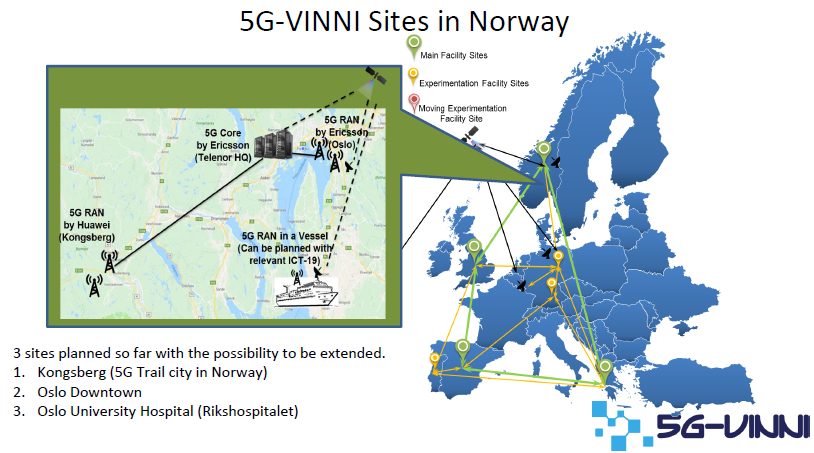
Figure 1: 5GVINNI Locations in Norway. Satellite as optional backhaul for gNB sites in Oslo along with an ambition to cover ferry in open waters in a later phase of the project subject to resources.
An overview of the Norway facility site architecture with different functional components and the corresponding 5G-VINNI partners are illustrated in Figure 2. Appropriate firewalls (not shown in the figure) will be installed to secure the infrastructure.
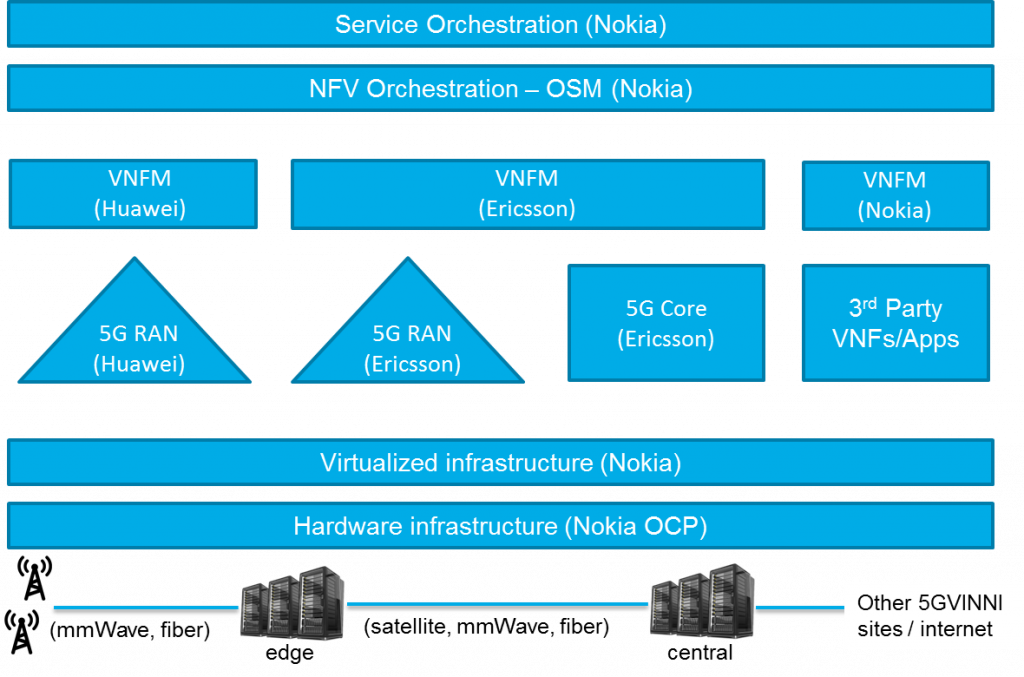
Figure 2: Architectural components in the Norway facility site along with the responsible partners.
5G RAN and Core
The initial deployment will be based on Non Stand Alone (NSA) configuration with 5G New radio (NR) provided by Ericsson in the Oslo site and 5G-NR by Huawei in the Kongsberg site. The 5GNR in Oslo and Kongsberg will be connected to respective independent packet cores in the first phase. In the second phase, Stand Alone (SA) implementation will be done with 5GNR from both Ericsson and Huawei connected to a single 5G core provided by Ericsson. The supported frequency bands will be 3.5GHz (80MHz bandwidth) and 26GHz (800MHz bandwidth). The spectrum allocation for these bands in the respective sites has already been granted.
For the initial NSA setup, Ericsson 5G EPC will provide 5G enabled SGW/PGW for supporting individual high data rates, 5G Enabled MME, HSS and subscription control. Network “slicing” in the NSA setup will be done using DÉCOR while the control user plane separation (CUPS) architecture will be leveraged for maximum topology flexibility.
Huawei will initially provide an NSA core in the early phase of the 5G-VINNI project to support the 5G RAN sites in Kongsberg until a multi-vendor environment is ready. The Core VNFs will be on boarded on the 5G-VINNI’s Virtualized Infrastructure and integrated with Service and NFV Orchestrators.
The existing transport network by Telenor Norway will also be used for connecting 5G-VINNI sites with the core and edge data-centers.
Virtualized Infrastructure and NFV Orchestration
Nokia will be implementing the Virtualized Infrastructure and NFV Orchestrator (NFVO). The NFV Infrastructure (NFVI) and Virtual Infrastructure Manager (VIM) will be based on OPNFV with OpenStack as VIM and KVM as hypervisor. The NFVO will be providing network service orchestrator and resource orchestrator functions. The NFVO will integrate with the Nuage Networks Virtualized Services Platform (SDN controller).
Both specific and generic VNF Managers (VNFM) will be used. Dedicated VNFMs will be used for gNBs and Core VNFs from Ericsson and Huawei. Generic VNFM will be used to manage remaining software functions such as for specific vertical industry use cases and the Open Data Fabric Service (explained below).
Existing core datacenter sites will be used which already includes datacenter gateway, firewalls, datacenter switches, servers and storage. The servers, storage and switches will be upgraded to serve the demands of use cases in 5G-VINNI. Datacenter infrastructure will also be needed for one edge datacenter in the Norway facility site collocated with the 5G base stations. The new servers, storage and switches will be provided by Nokia based on Open Compute Project (OCP).
Service Orchestration
The Service Orchestration providing Network Slicing as a Service will be implemented by Nokia using core components from the Flowone Suite. These will include a service and resource inventory as the repository of network slice instances and their relationship to customers and resources, order management functions for managing and tracking network slice instantiation and management, catalogue functions for onboarding NSDs, designing and publishing services, service orchestration functions for provisioning network slices. In addition a number of southbound network element interfaces and northbound API’s will be implemented for integrating with 5GNR, Core EMS and NFVO. The Service Orchestrator will also provide Northbound API’s for service life cycle management and east/westbound API’s for interworking with service orchestrators in other 5G-VINNI facility sites. Service templates will be implemented for uRLLC, mMTC and eMBB services and support life cycle management operations for:
- Creating, activating, modifying, de-activating, terminating and decommissioning network slice instances with shared and non-shared core network and access network functions across multiple operators
- Creating, activating, modifying, de-activating, terminating Network Slice Subnet Instances.
- Adding, modifying, and cancelling network slice instance users.
Satellite network
As shown in Figure 1, Satellite can be used as backhaul for 5G RAN that are located in the Oslo area, e.g. as redundancy for the fiber backhaul. Telenor Satellite configuration for backhauling 5G will use standardized VSAT satellite terminal connecting via satellite to a Gateway with Internet backbone access. The setup will be with either shared access with DVB-S2 ACM outbound and A-TDMA inbound or SCPC both ways. There will be an option to use multiple satellites for higher capacity and reliability particularly if the intrinsic broadcast/multicast capabilities of satellite shall be applied. VSAT terminals will be available for testing within a timeframe of 8-12 weeks.
In addition, 5G-VINNI has an ambition to cover ferries or autonomous boats in later stage of the project most likely in partnership with ICT-19 projects. Satellite will be used for backhauling in case this extended setup is realized within 5G-VINNI.
Open Data Fabric Service
The service to extract, compute/transform and move data across the distributed network facility (edge, fog, core, multi-country) will be implemented in the Norway facility site. The micro-services (correlation, aggregation, streaming analytics, historian, machine learning, access and integration, analytics) that make up the data fabric service are distributed throughout the infrastructure. The distributed data fabric will be orchestrated and provided as a service for deployment, operation and use by vertical industry use cases with particular relevance for IoT use cases.
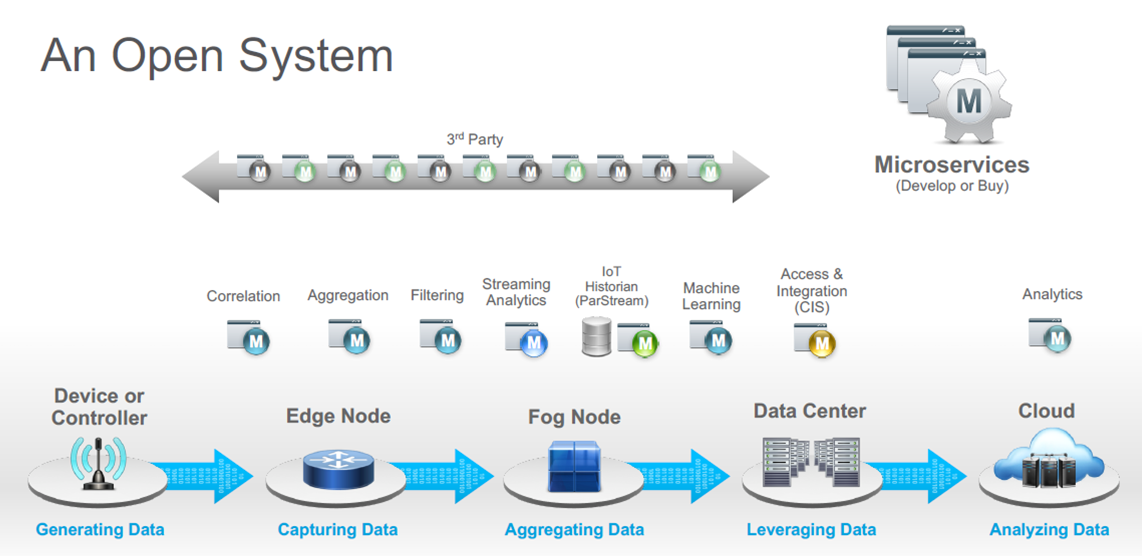
Figure 3 Distributed Data Fabric Service

